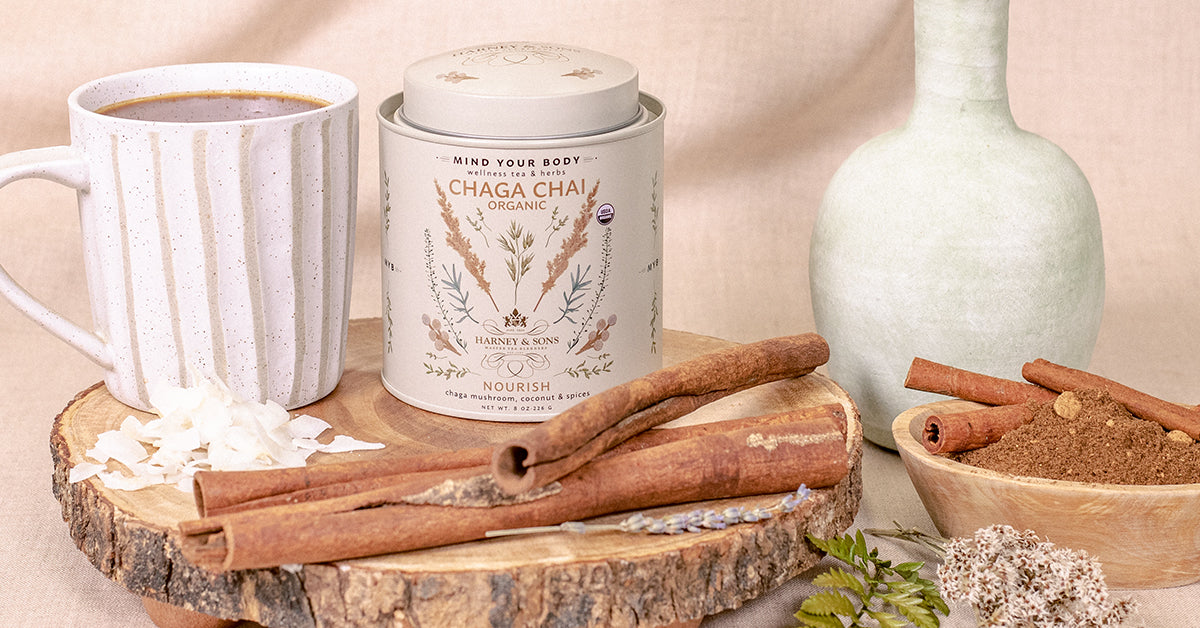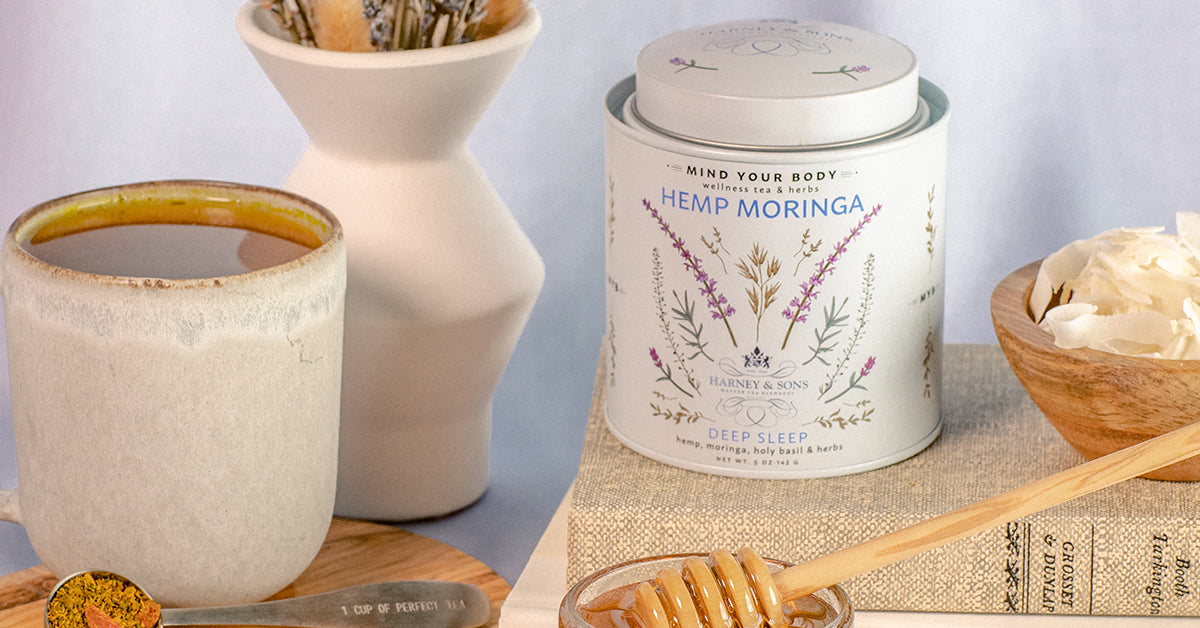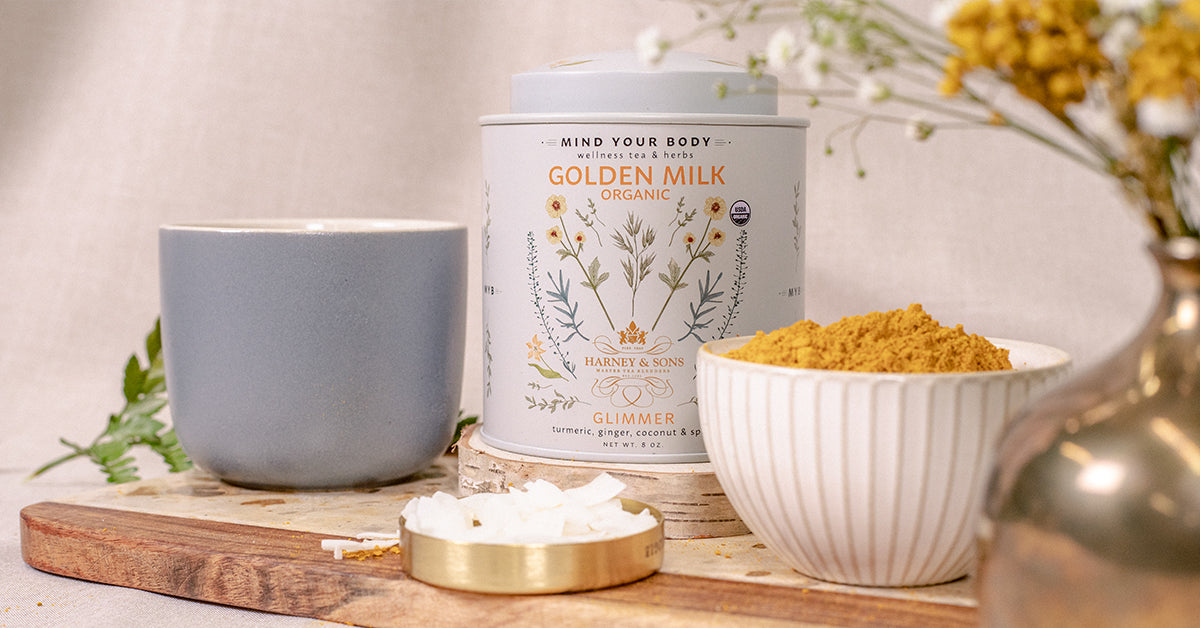“If we could give every individual the right amount of nourishment and exercise, not too little and not too much, we would have found the safest way to health.” - Hippocrates
There are two definitions for the word “nourishment.” One relates to food and nutrients; the other to sustenance or care. Having a holistic plan for the nourishment of your mind, body, and soul is central to sustainable, regular, long-term health, and well-being. The ways in which we do that are fairly basic: what we put into our bodies, how we move our bodies, and what kind of attitude we choose to bring to our daily lives.
During COVID-19, taking care of ourselves has become even more critical to our overall physical and mental wellbeing. Finding the simplest, most accessible ways to give your mind and body what it needs is crucial. We’ve put together some ideas and tips on how to do that. Some of the ideas may be new, others familiar, others something you knew but needed to be reminded of. But first, of course, we start with tea!
Chaga Chai Nourish Wellness Blend
This Mind Your Body tea is a fungi to drink! The base of Chaga Chai is Canadian Chaga mushrooms, an adaptogen with all-natural properties that help the body reduce stress. It has been used for centuries to help boost immunity and overall health. On top of this nutritional base, we added:
- Ginger. Ginger is the little root that could. It is also an adaptogen with all kinds of other powerful nutrients. Its list of known health benefits goes from helping with nausea to its anti-inflammatory properties and other things that it has been employed to treat for thousands of years.
- Cinnamon. This centuries-old spice comes from the inner bark of a type of tropical evergreen plant from the species Cinnamomum. Cinnamon is believed to have antioxidant and anti-inflammatory properties as well as many other potential benefits. Also, the smell and taste of cinnamon are some of life’s happiest moments!
- Coconut Pieces. As we mentioned in our Sleep blog post, coconut has a host of nutrients, including a substantial amount of manganese, which is good for bone health. A little tropical vibe never hurt anyone, either!
- Cardamom. A fragrant spice commonly found in Indian food, cardamom is commonly used in Ayurvedic medicines and is known to help with digestive issues as well as help with bad breath (thank you, cardamom!).
- Nutmeg. This delicious spice contains an abundance of minerals and vitamins.

Giving Your Body What It Needs and Wants
For most of us, hearing our parents say “Eat your vegetables!” was probably one of the least favorite memories of our childhoods. And while we all wanted to toss the broccoli in the trash and chow down on cookies, candy, and ice cream, our parents knew what they were talking about. With childhood obesity on the rise in America, making sure we start eating nutritious foods early and continue that as a lifelong habit is critical to our long-term health.
In fact, according to the U.S. Department of Health and Human Services, unhealthy eating habits have contributed to the obesity epidemic in the United States: about one-third of U.S. adults are obese and approximately 17% (or 12.5 million) of children and adolescents aged 2—19 years are obese. Even for people at a healthy weight, a poor diet is associated with major health risks that can cause illness and even death. These include heart disease, hypertension, type 2 diabetes, osteoporosis, and certain types of cancer. The link between good nutrition and healthy weight reduced chronic disease risk, and overall health is too important to ignore. By taking steps to eat healthily, you'll be on your way to getting the nutrients your body needs to stay healthy, active, and strong.
Tips for getting the right nutrients as well as having a balanced diet include*:
- Make half your plate fruits and vegetables. Choose red, orange, and dark-green vegetables like tomatoes, sweet potatoes, and broccoli along with other vegetables for your meals. Add fruit to meals as part of main or side dishes or as dessert. The more colorful you make your plate, the more likely you are to get the vitamins, minerals, and fiber your body needs to be healthy.
- Make half the grains you eat whole grains. An easy way to eat more whole grains is to switch from a refined grain food to a whole grain food. For example, eat whole wheat bread instead of white bread. Read the ingredients list and choose products that list a whole grain ingredient first. Look for things like: "whole wheat," "brown rice," "bulgur," "buckwheat," "oatmeal," "rolled oats," quinoa" or "wild rice."
- Switch to fat-free or low-fat (1%) milk. Both have the same amount of calcium and other essential nutrients as whole milk, but fewer calories and less saturated fat.
- Choose a variety of lean protein foods. Meat, poultry, seafood, dry beans or peas, eggs, nuts, and seeds are considered part of the protein foods group. Select leaner cuts of ground beef (where the label says 90% lean or higher), turkey breast, or chicken breast.
- Compare sodium in foods. Use the Nutrition Facts label to choose lower sodium versions of foods like soup, bread, and frozen meals. Select canned foods labeled "low sodium," "reduced sodium" or "no salt added."
- Drink water instead of sugary drinks. Cut calories by drinking water or unsweetened beverages. Soda, energy drinks, and sports drinks are a major source of added sugar and calories in American diets. Try adding a slice of lemon, lime, or watermelon or a splash of 100% juice to your glass of water if you want some flavor. (Tea is also an excellent alternative!)
- Eat some seafood. Seafood has protein, minerals, and omega-3 fatty acids (heart-healthy fat). Adults should try to eat at least eight ounces a week of a variety of seafood. Children can eat smaller amounts of seafood, too.
- Cut back on solid fats. Eat fewer foods that contain solid fats. The major sources for Americans are cakes, cookies, and other desserts (often made with butter, margarine, or shortening); pizza; processed and fatty meats (e.g., sausages, hot dogs, bacon, ribs); and ice cream.
*Source: The U.S. Department of Health and Human Services
Of course, liking what you eat is also important-- where’s the joy in munching on celery all day? If you’re trying to add in more nutritious foods, look for recipes with ingredients that are nutritious but appeal to your taste buds. Eating should be healthy and joyful. And if you’re following a balanced diet and you’re healthy, splurging on that favorite not-so-healthy thing every now and then is ok. We don’t eat scones with clotted cream and jam every day around here, but we can’t imagine life without them every now and then!

Be Food Aware
Two other important ways you can up your nutrition regimen are to read and listen.
- Get food schooled. Do you read the labels on the foods you buy? If you don’t, it’s a real eye-opener. Sodium, sugar, fat, and artificial ingredients are loaded into a lot of the food we consume, and they can be diet destroyers at best and silent killers at worst. Read up on what the Recommended Dietary Allowances (RDA) amounts of calories, sugar, salt, and other nutrients are and endeavor to live within those recommended numbers. One thing to watch for in particular: added sugars to non-fat and low-fat products. It’s a sneaky additive to a product that you think might be more healthy but might not actually be.
Also, when buying produce, fresh tastes best and has the most nutrients. If you go to a farmer’s market, you’ll be able to buy what’s in season and ask about any pesticides that might have been used. When buying fresh at the grocery, if produce carries a “Certified Organic” or “USDA Organic” label, that means it has been farmed by the USDA’s organic standards which include no chemical pesticides or fertilizers. Organic food is more expensive than standard produce, but for many, it’s worth the price. If you purchase standard produce, always wash it when you get ready to prepare it.
- Listen to your body. Do certain foods make you bloated? Give you heartburn? Cause digestive issues? Give you a headache? Make you crash out? Jalapenos may be your best friend’s best friend, but not necessarily yours. Your body knows what it likes and what it doesn’t. Pay attention and, as we like to say around here, “take a pass on what gives you gas!” The point is for food to make you feel better, not worse.

Superfoods!
While not an official term or category of foods but more a popular label for these powerhouse foods, superfoods are more nutritiously dense than other foods and contain things like antioxidants, healthy fats, and phytochemicals, the chemicals in plants that cause deep colors and smells that carry numerous health benefits. Popular superfoods include:
- Kale. The current king of the greens, kale, along with other dark leafy greens such as Swiss chard, collards, mustards, spinach, cabbages, and broccoli, is rich in vitamins A, C, K as well as fiber, calcium, and other minerals.
- Sweet Potatoes. Great sources of fiber and vitamin A, these naturally sweet vegetables don’t need additional butter, cream, or salt added to potatoes.
- Beans. Beans are an excellent source of low-fat protein. They’re also loaded with insoluble fiber, which lowers cholesterol, soluble fiber, which provides a feeling of being full, as well as vitamins and minerals.
- Nuts and Seeds. Tiny but mighty, these contain high levels of healthy fats and minerals. Watch how many you eat, however, as they are high in calories.
- Berries. Rich in vitamins, soluble fibers, and phytochemicals such as flavonoids, blueberries, strawberries, cranberries, raspberries, and blackberries are all a powerhouse of nutrients. We love including them in our teas, not only because they are good for you, but of course, because they’re delicious! To name just a few of our many berry wonderful teas: Blueberry and Green, Strawberry Kiwi Herbal Fruit Tea, Cranberry, Raspberry Mojito, and Black Currant Tea.
- Salmon and Friends. Always popular on the coasts, salmon has been wildly popular even in the landlocked Midwest in recent years due to its healthy properties. It is rich in omega-3 fatty acids, which are thought to help lower the risk of heart disease and stroke. Other fatty fish friends include tuna, anchovies, oysters, sardines, herring, trout and mackerel.
- Avocado! The main ingredient in that most awesome of foods, guacamole, avocados are packed with folate, vitamin K and potassium. While they are high in calories, it comes from the so-called “good fat” -- monounsaturated -- that has a positive effect on cholesterol. Believe it or not, Harney carries two teas with avocado leaves: Avocado Sunrise and Avocado Leaf.
- Green Tea. Green teas are another way to get your daily dose of antioxidants to support immunity along with an amino acid called L-theanine which produces a calming effect. The combination of caffeine and L-theanine is believed to support brain health. To get the full power of green tea’s nutritional value, drink matcha, which is made from the full leaf and therefore has all the nutrition green tea has to offer.
- Ginger. Ginger root contains many antioxidants, including gingerol, that are responsible for the many health benefits we’ve mentioned that are associated with this food, most notably as an anti-nausea agent and anti-inflammatory. Try our traditional Ginger Tea or a blend like Peaches & Ginger, Green Tea with Coconut, Ginger and Vanilla, or one of our many other ginger-infused teas.
- Turmeric. The active compound in turmeric, curcumin, is known for its potent antioxidant and anti-inflammatory properties as well as other possible benefits. To help your body better absorb curcumin, take it in conjunction with black pepper. Because we love sneaking superfoods into our teas, you’ll find turmeric in teas like Golden Milk Glimmer Wellness Tea, Hemp Moringa Deep Sleep Tea, Organic Ginger Turmeric, and American Buzz Turmeric Orange Iced Tea, and from The Hemp Division of Harney, Golden Milk, Sleep, Calm Turmeric Ginger hot tea, and Calm Turmeric Ginger Honey iced tea.
- Mushrooms. While nutrient content depends on the type of mushroom you ingest, mushrooms contain vitamin A, potassium, fiber, and several antioxidants not contained in other foods. Studies have also shown that people who eat mushrooms are eating more vegetables in their diet in general-- mushrooms keep good company! To incorporate a little mushroom in your tea, try our Chaga Chai Nourish Wellness Blend, Chaga Mushroom, or Chaga Wonder teas.
Benefits of Tea in Your Holistically Healthy Diet
As mentioned earlier, using tea to replace sugary drinks is an excellent way to cut down on calories. In addition, there are many teas that carry health benefits along with a dose of delicious.
- Green Teas. As mentioned above in the Superfoods list, green tea is an excellent way to add some wellness oomph to your daily tea habit. Harney has an extensive offering of green teas and matchas for your enjoyment and wellbeing.
- Hemp Teas. The many benefits of CBD are well documented, and fans of CBD everywhere sing its praises. At our sister company, The Hemp Division, we grow our own hemp and create all-natural products from the roots up. We offer not only hot and cold teas but various other products as well. Find the CBD level and product that’s right for you.
- Chopra Center Ayurvedic Teas. Finding balance is what living a holistically healthy life is all about, and so is the Chopra Center. Whether you’re looking to invigorate, soothe or detox, these teas will help you on your wellness journey.
- Mind Your Body Teas. In addition to Chaga Chai Nourish, we offer other Mind Your Body teas that have been specially created with your best self in mind. Choose the one (or ones) that help you achieve your goal or give you the experience you’re looking for.
Healthy No-Bake Coconut Chai Energy Granola Bars

Looking for tea you can sink your teeth into? Enjoy these nutritious and delicious Healthy No-Bake Coconut Chai Energy Granola Bars. Perfect to take on your next hike, have for breakfast, and easy to incorporate into your meal prep. Also excellent broken up and sprinkled on your smoothie bowl or on top of yogurt.
Ingredients:
- 2 cups old fashioned rolled oats
- ½ cup unsweetened shredded coconut
- ½ cup slivered almonds
- ¼ cup raw unsalted sunflower seeds
- ½ cup honey, agave or sweetener of choice
- ¼ cup almond butter
- 2 tsp Chaga Chai tea blend
- 1 tsp vanilla
- ¼ tsp salt
Directions
- Line 8x8 pan with parchment paper.
- In a large bowl, mix together oats, coconut, almonds, and sunflower seeds.
- In a saucepan, heat together sweetener and almond butter. Stir constantly until well combined and the edges start to slightly bubble.
- Add in chai tea and remove it from heat.
- Add vanilla and salt to the saucepan mixture.
- Pour the liquid in the pan into the dry ingredients and stir. Dump into the lined pan and use a piece of parchment paper or wet hands to pat into place.
- Freeze for 30 minutes then slice into 12 rectangles and wrap individually in plastic wrap. Store in the fridge for up to 10 days or freeze for up to 2 months.
Print Coconut-Chai Energy Granola Bar Recipe Here
Other Resources and Ideas
- Podcasts. Like we said at the beginning of this post, food is only one part of the wholeness equation. Check out these podcasts, covering topics from exercise to health care to mental illness to, yep, food. We’re pretty sure you’ll find something that resonates and motivates.
- Blogs. There are a lot of blogs out there about food. One that we like is The Joy of Eating by dietician, nutrition therapist, and certified intuitive eating counselor Rachel Hartley. Rachel is “fiercely passionate about helping others ditch the diet rules and rediscover the joy of eating. My goal is to help my clients and readers improve their physical and mental health with eating habits rooted in self care and nourishment vs. deprivation.” Her blog features amazing recipes and tips for living a nutritious and happy life.
- Books. Verywell Fit did the work for us here, selecting their top eight best nutrition books. Top of the list is from food guru Michael Pollan, and the hits just keep comin’ from there. Books for kids, men, women, vegetarians, and more.
- Caravan. Saving the best for last... do you know about Caravan? Caravan is a wellness site that is bursting with all kinds of transformational resources to help you live your best life, including mindful eating and fitness. If you’re not already signed up, we’ve got a sweet deal for Harney tea fans. You can sign up for a free seven-day trial and 50% off your Caravan subscription for up to six months. Learn more and redeem this Harney-only offer at our partnership site.
Here’s to nourishing your mind, body, and soul!




